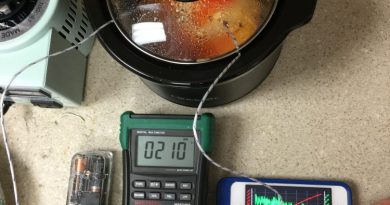Transformers and Variable Autotransformers
Before we get into what a variable autotransformer is and how it works let’s take a look at regular transformers.
A transformer provides electrical isolation, impedance matching, and translates voltages between primary and secondary circuits. Alternating current at one voltage is applied to the transformer’s primary side which provides alternating current in the transformer’s secondary side at a different voltage.
You need to understand two basic concepts to make sense of how a transformer operates. First, a current flowing through a wire creates a magnetic field in the surrounding area. Thus, if you change the current you’ll change the magnetic field as well. Second, when a magnetic field changes in the presence of a circuit it will induce current in the circuit.
It follows from those concepts that using alternating current to make a changing magnetic field near another circuit will generate electric current in the circuit — which is what happens in a transformer. A standard transformer is made up of coils of wire, one for the primary winding and one for the secondary, which are wrapped around an iron core in order to maximize the combined magnetic flux and the transformer’s efficiency.
Variacs
A variable autotransformer, known generically as a variac, is a type of transformer with just one coil that is shared by the primary and secondary side of the circuit. The ratio of the primary to the secondary windings is variable as is the ratio of the secondary to the primary voltage.
Inside the variac looks much like an oversized rheostat and there is a single partially exposed winding, which allows the movable wiper to make an electrical connection. The transformer’s primary connection is made on both ends of the winding, and the secondary connection is made to one end of the winding, known as the common connection, as well as to the movable wiper. When the wiper moves the transformer’s ratio changes.
One use for a variac is slowly bringing electronic equipment back into operation after long periods of disuse. Variacs are also used in experiments and electronics testing for simulating different line conditions and voltages. In addition you can use a variable autotransformer for powering electrical equipment designed for voltages outside of one hundred twenty or two hundred forty volts (these are the standard voltage in the United States).
